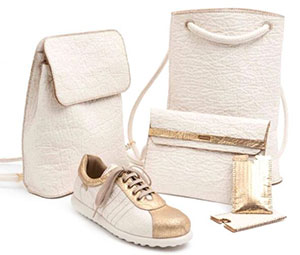Veganism has become a hot topic in my household recently. Both of our daughters are full-blown vegans, having cut out everything animal based in their diets (including dairy and honey!) as well as in their clothing, accessories and cosmetics (no animal testing, no animal by-products). (In an aside – if you’re interested in procuring ethically produced vegan makeup and cosmetics check out my daughter’s website). Jochen and I have pretty much eliminated meat and fish from our diets; I have a really hard time cutting out dairy because it impacts the cheese and yogurts that I absolutely love. So I call myself a ‘flexatarian’ which means I will eat pretty much what is served when we go out to friends’ homes for dinner, and I do cook vegan for the most part at home when I am around. (Please feel free to share your recipes with me!!)
For me, the key is the ethical treatment of the animals – how they are farmed and slaughtered. I have read numerous books on the subject and watched several documentaries, and mainly because of the unsustainability of the meat industry globally over the next couple of decades, we all made the conscious decision to change. I try not to proselytize but the fact is that especially in North America a huge change could be made if everyone agreed to go ‘vegan’ for even just one day a week or start out with one meal a day. The problem is because most North Americans enjoy meat at all three meals – and the amount of land and water (not to mention gases affecting the environment) needed to support this animal husbandry – has a huge effect on the environment. What legacy are we leaving for our children? Having learned about the treatment of these animals in factory farms is enough to put you off your food; I am ashamed to admit that I have been living in denial for the most part with the attitude that just me changing my habits will not make any difference.
So now the question arises about the hypocrisy of what I have just said – especially considering our own business. Leather is a by-product of the meat industry, and as such, has already seen a huge decline in availability world-wide. Leather tanneries are pretty much non-existent in North America; when we came over in the mid-1980s from Europe there were still a good 10 to 15 around to procure our leather from. Now we get pretty much 100% from European tanneries since there is no one left on this continent to supply us with the quality we require for our high-end product. But how can we continue to use this leather, knowing where it comes from, and presumably – how the animals providing it were housed and slaughtered? Again – denial has been a great tool thus far, but the question does get asked.
Moving to potential ‘vegan’ suppliers (i.e., using skye (vinyl) or fake leather – some of which is phenomenally close in texture and feel to the real stuff) brings with it a whole other dilemma. These materials are notoriously durable and NON-biodegradable – which means they’re going to be around for a very long time. At least leather will succumb to its origins over time, and return to the environment. So you have two sides of the coin and need to make a decision. One company has started to produce ‘leather’ out of pineapple, however they are unfortunately not ready to supply us with the proper product to make saddles out of. At present, their ‘leather’ is used for purses and furniture only, but we are keeping them on our radar.
Of course, saddles made out of neoprene have long been on the market and have their pros and cons – but I seriously think that this will be the direction the industry will be taking in the next 50 or so years. I’d love to hear your thoughts on this and whether you would be open to riding in non-leather saddles that look and feel the same but have not used animal skins in their manufacturing.
~ Sabine Schleese, B.Sc., MBA

